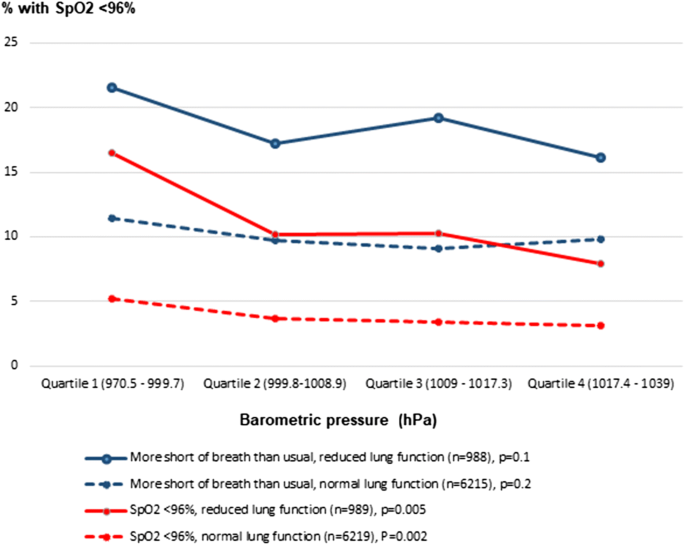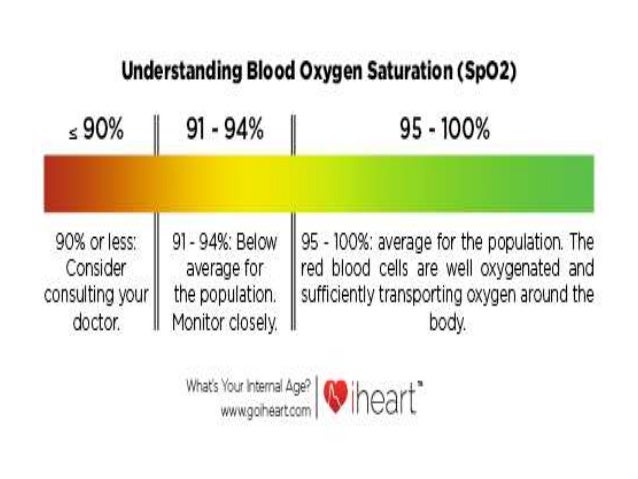SpO2 values between 95 and 100% are considered normal. If you have sleep apnea, another tool we at @druglessdrs is a pulse oximeter that tests the oxygen saturation of your blood. #PreventSurgery pic.twitter.com/qW17bUG8ss — Dr. Bob DeMaria (@DruglessDoctor) September 12, 2017. If all of your haemoglobin have four oxygen molecules bound to them, your blood would be 'saturated' with oxygen and you would have an SpO2 of 100%. Most people don’t have oxygen saturations of 100% so a range of 95-99% is considered normal. Anything below 95% is an indicator of hypoxia – a lack of oxygen perfusing the tissues.
The normal oxygen saturation level is 97–100% (OER #1).
Older adults typically have lower oxygen saturation levels than younger adults. For example, someone older than 70 years of age may have an oxygen saturation level of about 95%, which is an acceptable level.
It is important to note that the oxygen saturation level varies considerably based on a person’s state of health. Thus, it is important to understand both baseline readings and underlying physiology associated with certain conditions to interpret oxygen saturation levels and changes in these levels.
Normal Sp02 Percentage
- People who are obese and/or have conditions such as lung and cardiovascular diseases, emphysema, chronic obstructive pulmonary disease, congenital heart disease and sleep apnea tend to have lower oxygen saturation levels.
- Smoking can influence the accuracy of pulse oximetry in which the the SpO2 is low or falsely high depending on whether hypercapnia is present. With hypercapnia, it is difficult for the pulse oximeter to differentiate oxygen in the blood from carbon monoxide (caused by smoking).
- Oxygen saturation levels may decrease slightly when a person is talking.
- Oxygen saturation may remain normal (e.g., 97% and higher) for people with anemia. However, this may not indicate adequate oxygenation because there are less hemoglobin to carry an adequate supply of oxygen for people who have anemia. The inadequate supply of oxygen may be more prominent during activity for people with anemia.
- Falsely low oxygen saturation levels may be associated with hypothermia, decreased peripheral perfusion, and cold extremities. In these cases, an ear lobe pulse oximeter device or arterial blood gases would provide a more accurate oxygen saturation level. However, arterial blood gases are usually only taken in critical care or emergency settings.
Points to Consider

Onda network & wireless cards driver download for windows 10. In practice, the SpO2 range of 92–100% is generally acceptable for most clients. Some experts have suggested that a SpO2 level of at least 90% will prevent hypoxic tissue injury and ensure client safety (Beasley, et al., 2016).

Normal Sp02 For Women

Normal Sp02 Wave
_________________________________________________________________________
Part of this content was adapted from OER #1 (as noted in brackets above):
© 2015 British Columbia Institute of Technology (BCIT). Clinical Procedures for Safer Patient Care by Glynda Rees Doyle and Jodie Anita McCutcheon, British Columbia Institute of Technology. Licensed under a Creative Commons Attribution 4.0 International License, except where otherwise noted. Download this book for free at http://open.bccampus.ca
